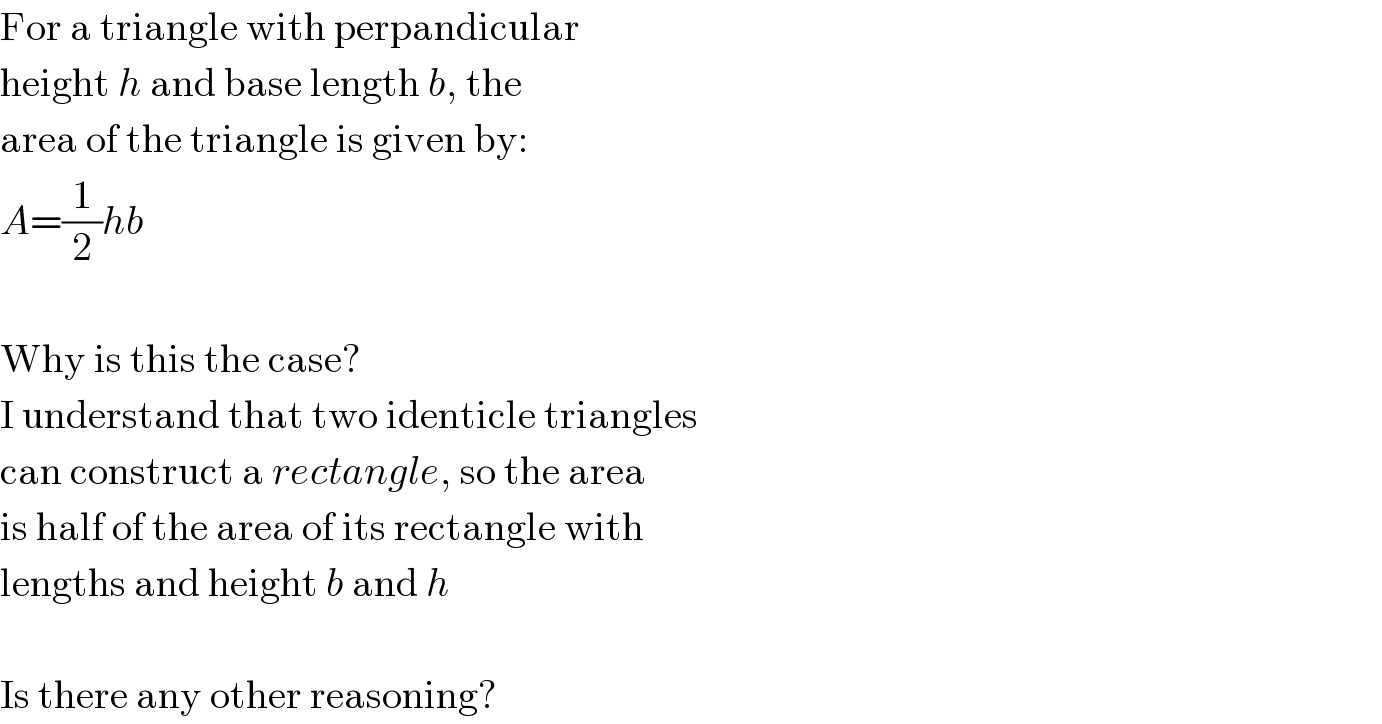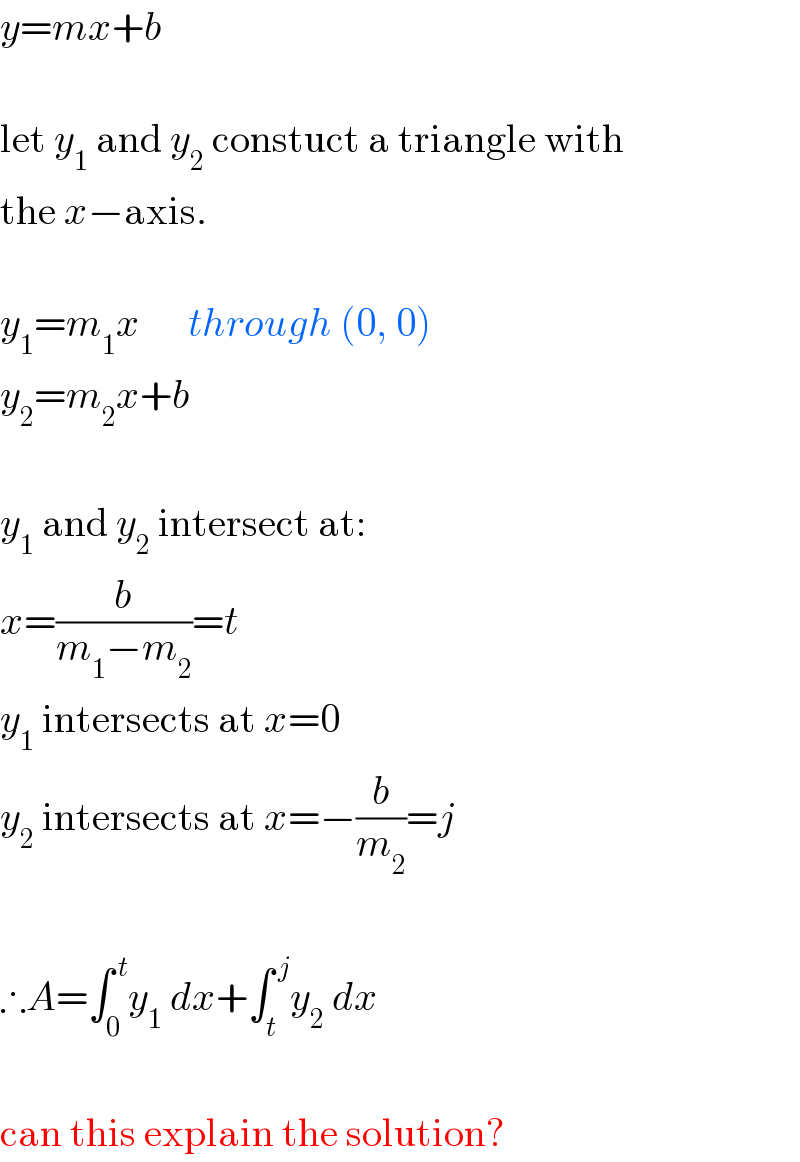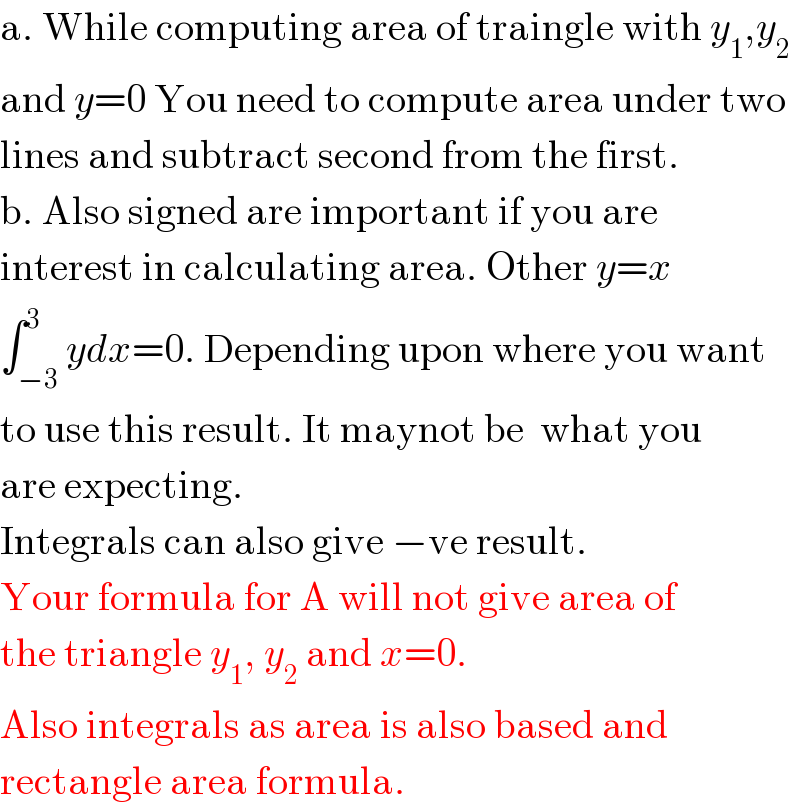
Question and Answers Forum
Question Number 3280 by Filup last updated on 09/Dec/15

Answered by 123456 last updated on 09/Dec/15

Answered by prakash jain last updated on 09/Dec/15

Answered by Filup last updated on 09/Dec/15

Commented by prakash jain last updated on 09/Dec/15

Commented by 123456 last updated on 09/Dec/15
![this is because actualy area in the ontegral take the sign for y=x at x∈[0,3] the function is positive at x∈[−3,0] the function is negative so the area in the [0,3] is positive and in [−3,0] the area is negative them the integral givd the diference of area over axis x and under axis x if actualy you want the total are just take integral of ∣y∣ instead, wich solve the problem of sign](Q3301.png)
